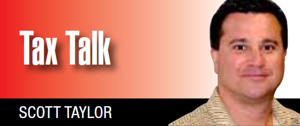Most Canadians pay income tax every payday, when their employer takes some of their salary or wages and sends it to Canada Revenue Agency (CRA) on their behalf.
People who have income but not a regular paycheque with source deductions have to pay their tax in quarterly installments. If you’re a sole proprietor and your total taxes payable are more than $3,000 this year, or were more than $3,000 in either one of the two preceding tax years, these payments are due on March 15, June 15, Sept. 15, and Dec. 15.
Sole proprietors must have paid enough tax by Dec. 31 to cover the amount they would otherwise have to pay on Apr. 30 of the following year. Corporations must have enough tax paid by their year-end. If you wait until the end of the year and pay a lump sum amount, you’ll be charged an interest penalty calculated against what CRA says you should have paid at the quarterly deadlines.
That’s expensive. Interest is compounded daily at the CRA’s prescribed interest rate. Furthermore, it’s not an allowable expense: you can’t deduct it as you would interest on any other business loan.
Any installment charges will be shown on your Notice of Assessment. Have a look at your 2015 NOA from last year (or you might have your 2016 Notice of Assessment already) and see just how much CRA has added to your bill. If you don’t pay your taxes in full by Apr. 30, then even more interest will be charged as you pay the balance over the coming months.
Set money aside
The real trick to paying taxes quarterly is having the discipline to set money aside, especially when you have other bills to pay.
We advise clients to apply their quarterly GST/HST refunds to their income tax installment payments.
|
Given how fast interest and penalties can add up, it’s also good to talk about how to make sure you can pay what you owe on time.
|
Set up a second bank account and have CRA direct deposit your GST/ HST refunds into it to make sure the money doesn’t get used for everyday activities. In the long run, it will help with budgeting and business planning and save you any interest and penalty charges.
Depending on where you’re from, where you spend your money, and what expenses you have, a GST/ HST refund could be $2,000 to $3,500 each quarter. Having sent that $8,000 to $13,000 to CRA as quarterly installments for 2016 sure would change the look of your tax return right now.
You may not have received your January-to-March refund yet and will be filing your April-to-June GST/HST refund in July. Taking both these refunds and sending them to CRA would be a great start toward paying your 2017 taxes.
Or why not establish a TFSA (Tax Free Savings Account) at your bank and deposit your GST/HST refunds there? Your money can grow taxfree until you send your payment to CRA. There’s an accumulating yearly deposit limit into these types of accounts. If you have never set one up before you will have lots of room for your GST/HST refunds as your 2017 TFSA deposit limit should be $52,000.
I was talking to a new client recently and he told me he was an owner-operator many years ago, but lost the truck and filed a consumer proposal to get out from all of his debts.
Guess who’s at the top of the list of the most money he owes? Yup, CRA. Guess who plans to use his HST refunds to pay his quarterly tax installments? Yup, this owner-op.
As personal income tax season winds down and tax planning season ramps up, a lot of you are asking how to reduce the amount of tax you owe. Given how fast interest and penalties can add up, it’s also good to talk about how to make sure you can pay what you owe on time.
Scott Taylor is vice-president of TFS Group, providing accounting, bookkeeping, tax return preparation, and other business services for owner/operators.
Learn more at www.tfsgroup.com or call 800-461-5970.
